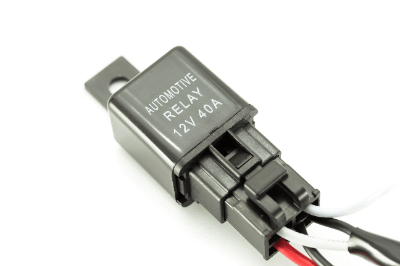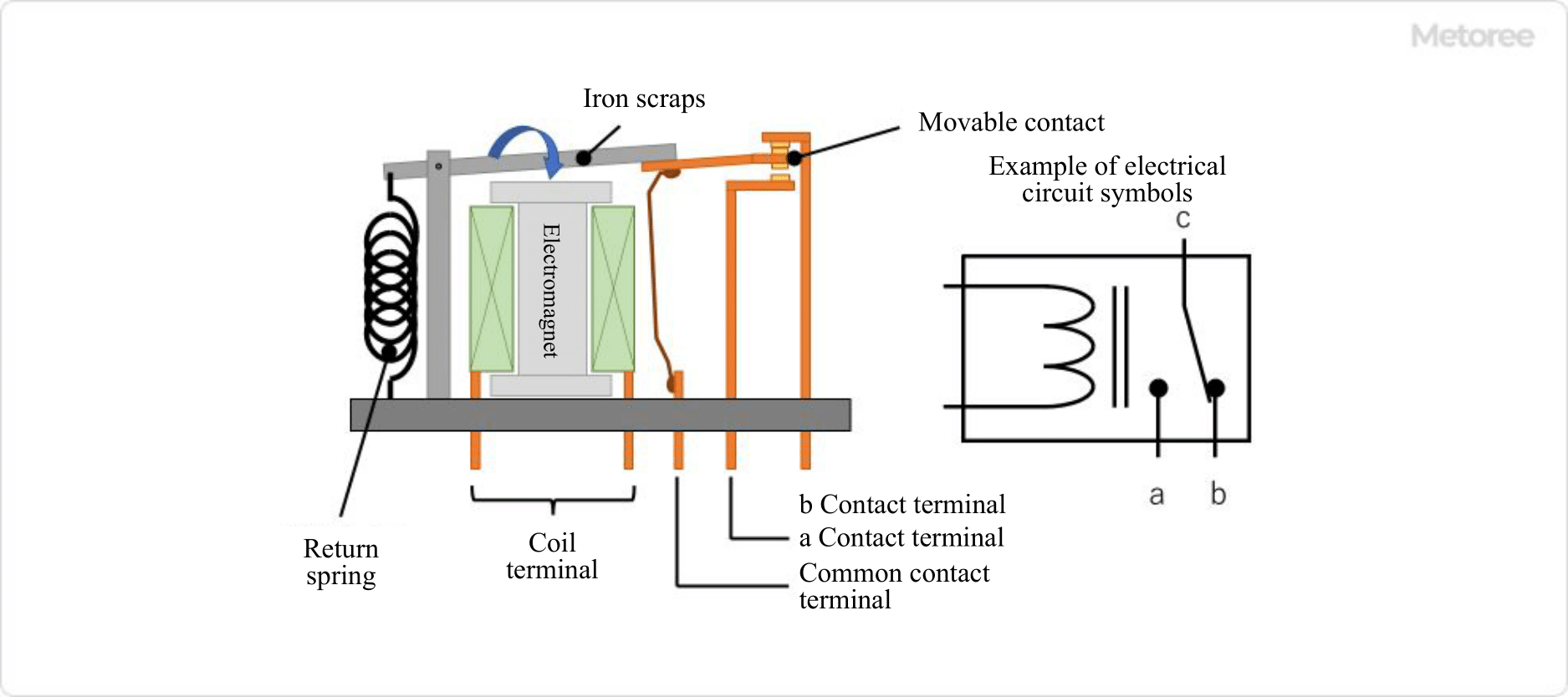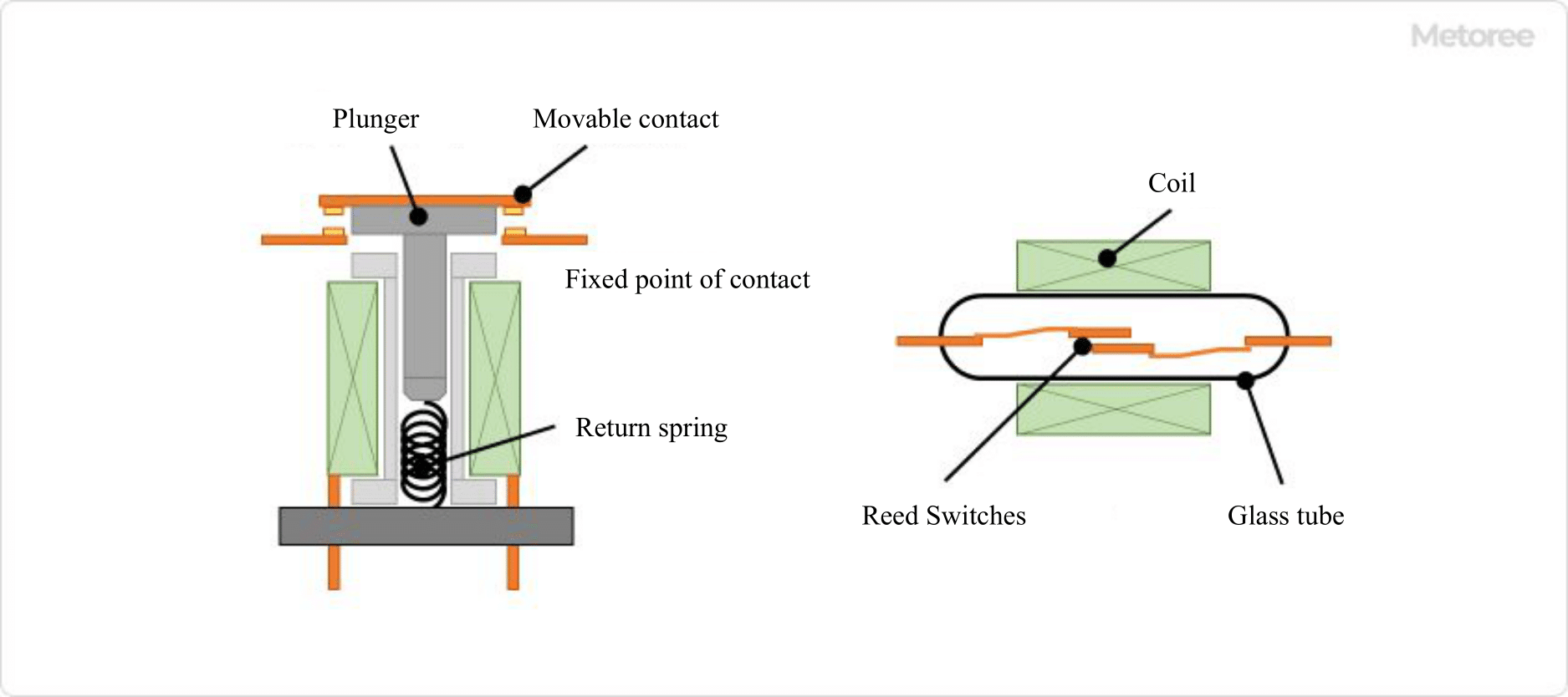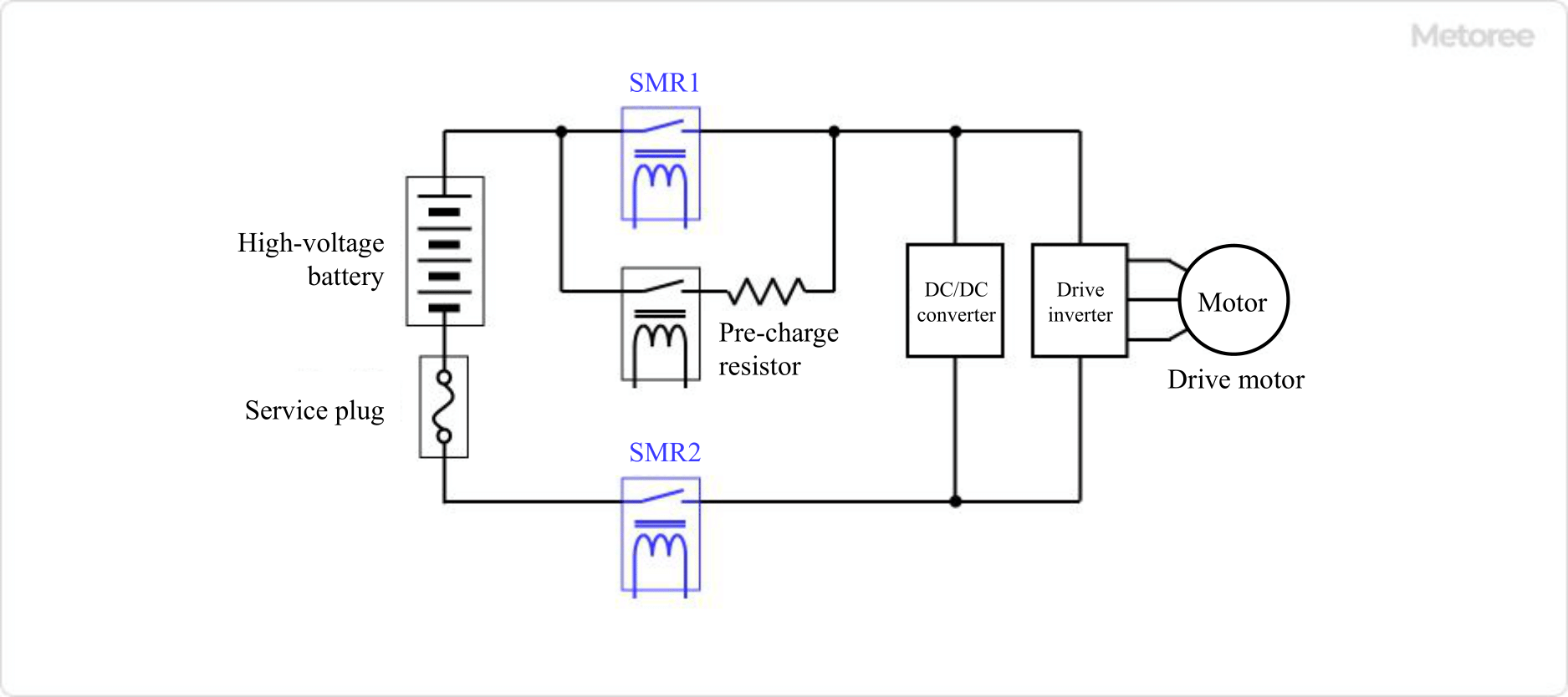What Is Automotive Relay?

Automotive Relays are relays designed to fit the control of electrical components in automobiles.
There are many Automotive Relays for different applications. Since the electrical circuit design differs according to each automobile manufacturer, various relays are manufactured and sold according to the automobile manufacturer’s standards and according to the load.
Recently, when repairing electrical components in the event of an automobile breakdown, it has become possible to quickly repair the broken Automotive Relay in the electrical circuit by replacing the entire module at once.
Applications of Automotive Relays
Automotive Relays are used as relays for electrical circuits related to the control of automobiles. Automotive Relays come in many types, including relays used to control lamps such as headlights and taillights, and motor control relays used to operate power windows and door mirrors.
They are also indispensable in the electrical circuits of automobiles, such as relays used to control air conditioners and rear-glass heaters, and those used in circuits required for battery charging.
Features of Automotive Relays

Figure 1. Example of a typical relay structure
Automotive Relays generally have a simple structure consisting of an electromagnet with an enameled wire coil wound around an iron core, a movable contact, and a fixed contact.
There is no special structure as a control relay, but it is designed with weight reduction, vibration resistance, and durability in mind. The weight of an automobile affects fuel efficiency and driving performance. Although each Automotive Relay is lightweight, it is important to reduce its weight since many Automotive Relays are used in a single vehicle.
Also, unlike household electrical appliances, electrical components used in automobiles are constantly exposed to vibration from running and gasoline engines. To increase the durability of automobiles, relays with excellent vibration resistance and durability are used.
Another advantage of relays is their low operating noise. Automotive Relays used for motor control, such as power window operation, are often designed to be small and quiet. Another feature of relays is that they are designed for mass production to the specification requirements of each automobile manufacturer.
Types of Automotive Relays
There are various types of Automotive Relays depending on their mechanisms.
1. Hinged Relay
The electromagnetic force generated by an electromagnet attracts a piece of iron (movable contact) and turns the contact ON/OFF by its movement. In the relay shown in Figure 1, when the electromagnet is energized, the iron strip (movable contact) is attracted to the electromagnet, turning the a-contact ON and the b-contact OFF. When the current is removed, the restoring force of the return spring causes the iron strip to return to its original position, turning the a-contact OFF and the b-contact ON.
2. Plunger Type Relay

Figure 2. Example of a plunger-type relay structure
When the plunger is attracted by electromagnetic force and inserted into the coil, the electromagnetic force is also generated on the plunger side, resulting in a strong attractive force. This mechanism allows the plunger to travel a large distance, making it possible to control large relay contacts.
An example of use is the EV relay (SMR) shown below. The reed relay has a contact structure with a pair of magnetic leads. A coil is wound around a glass tube, which moves the reeds to turn the contacts on and off.

Figure 3. EV Relay (SMR) Usage Example
Among Automotive Relays, there is a relay for EVs. This relay is called an SMR (system main relay) and is inserted into the high-voltage circuit on the way to send the high power from the vehicle’s high-voltage battery to the drive inverter and other devices to open and close the main power source.
In the event of a vehicle collision, the SMR is controlled to disconnect the high-voltage battery to prevent secondary disasters such as electric shock, etc. Relays for EVs are required to be able to interrupt high-voltage DC in a short time and be compact and lightweight.